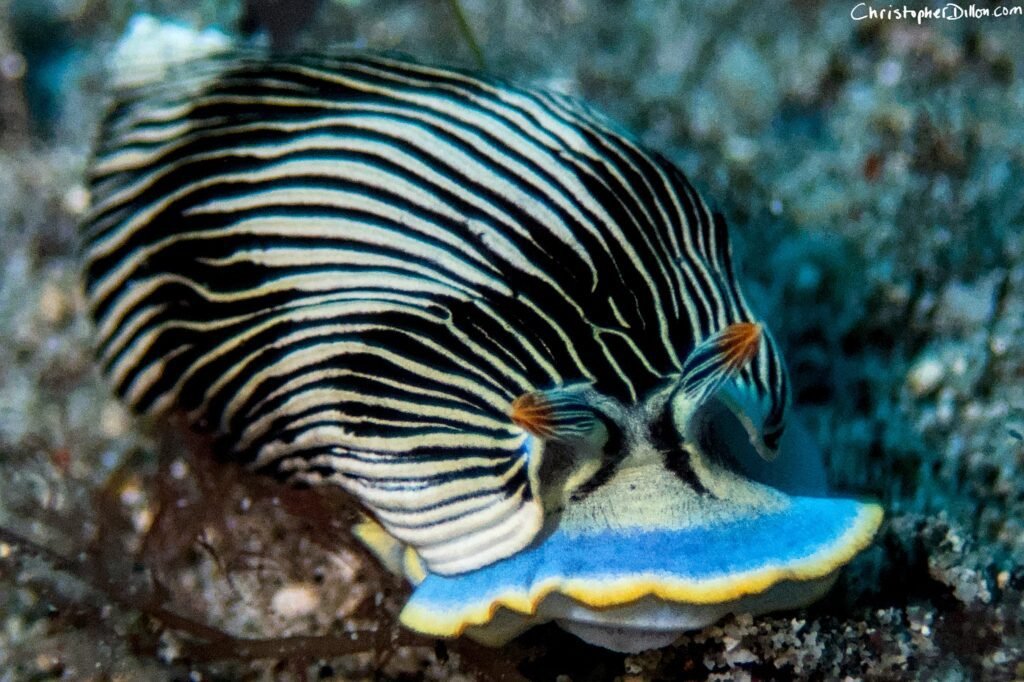
If you know nudibranchs, skip ahead a few paragraphs. If not, let me introduce you to these fascinating, photogenic creatures.
Nudibranchs
Nudibranchs (nudis) are sea slugs. You read that right. Slugs. Like the slimy ones in the garden. But these are not your average slugs.
Toxins: Nudis exhibit interesting behaviours. For example, Nembrotha kubaryana (pictured below) takes toxins made by its prey and releases the toxin as a defensive mucus.
Sex: Nudibranchs are hermaphrodites. Chromodoris reticulata discards its penis after sex and grows a new member the next day.
Appearance: Beauty sets nudibranchs apart. Like butterflies and orchids, nudis are examples of nature showing off. Their 3,000-plus species include different body shapes and striking, often-psychedelic color combinations. Nudis move slowly, making them excellent models.
Size & Location: Nudibranchs range from tiny to 60 centimeters. They are found throughout the world’s oceans, including Arctic and Antarctic waters.
Etymology: Nudibranch means “having naked gills.” The word is derived from the Latin nudi (naked) and branchae, from the Greek brankhia (gills). It is pronounced “new-dee-brank,” not “new-dee-branch.”
About the images
The nudis below are from Hong Kong, Indonesia, the Philippines and Thailand, and are presented in alphabetical order, using their scientific (binomial) names. Hover over an image to see the nudi’s name. Click for a full-size picture and more information.
Equipment
I shot these photos with an Olympus TG-5 in a PT-058 housing, with a single Olympus UFL-3 strobe. Images were shot in RAW and edited with darktable.
This is underwater photography on a shoestring.
- The Olympus TG-7 (the successor to my TG-5) has a U.S. list price of $549.
- The Olympus PT-059 underwater housing for the TG-7 is $349.
- The Sea & Sea YS-01 (which replaces my Olympus UFL-3) is $479.
- darktable (open source software) costs $0 and runs on Linux, Mac and Windows.
Total outlay: less than US$1,400.
The nudibranchs
***